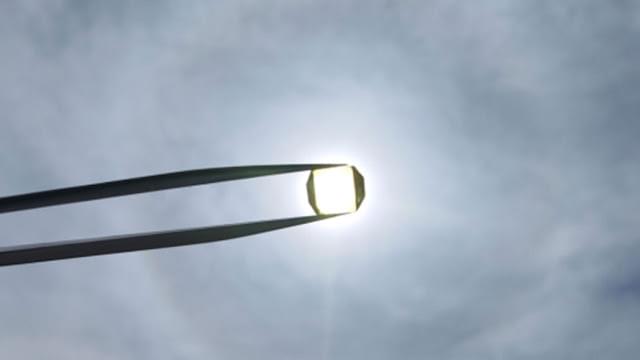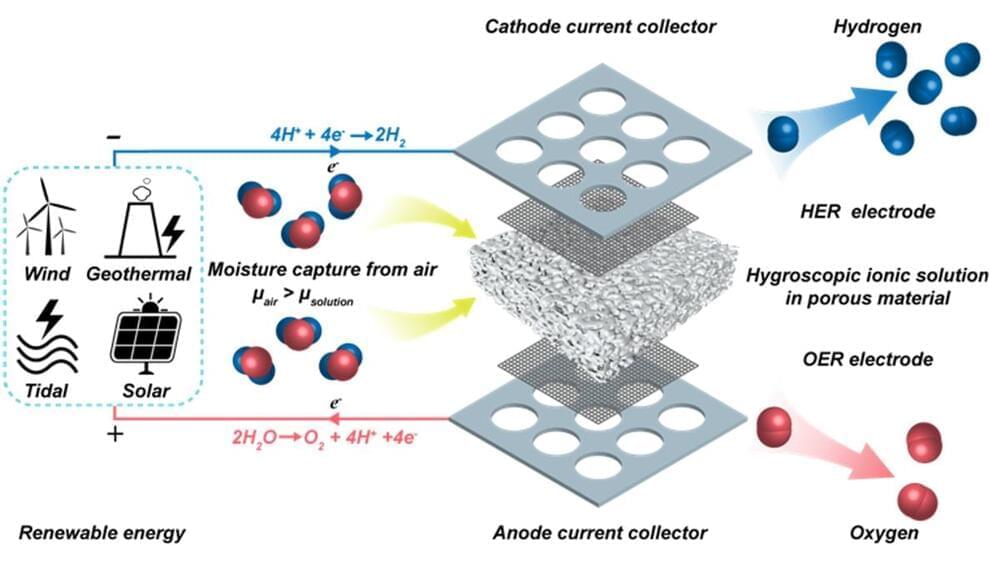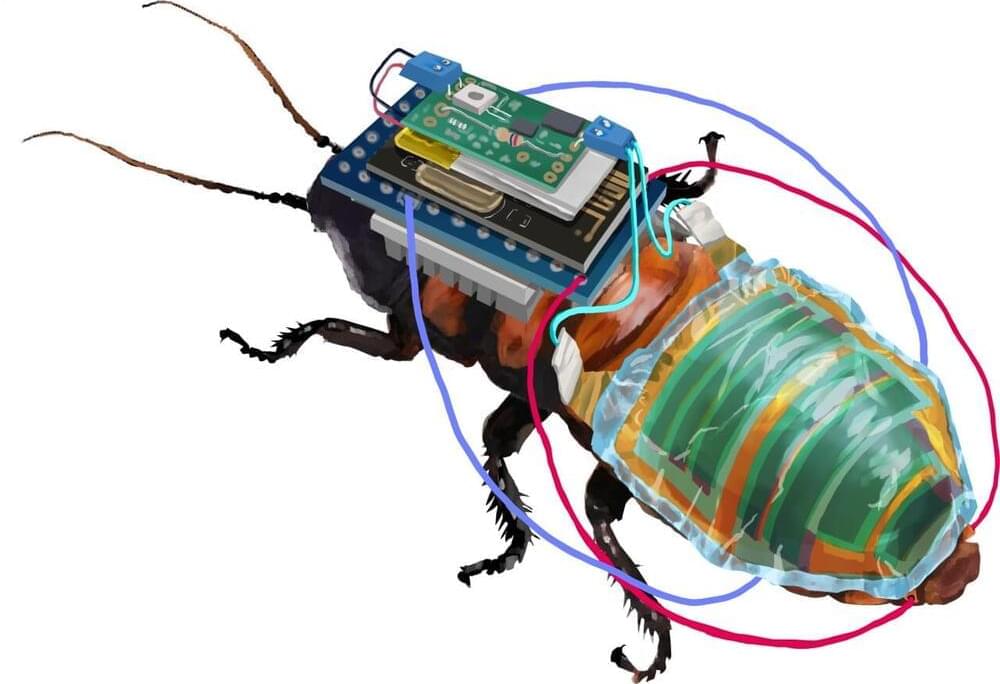A new photodetector design borrows its light-gathering architecture from plants, offering a potential path to more efficient solar cells.



Engineers at EPFL have found a way to insert carbon nanotubes into photosynthetic bacteria, which greatly improves their electrical output. They even pass these nanotubes down to their offspring when they divide, through what the team calls “inherited nanobionics.”
Solar cells are the leading source of renewable energy, but their production has a large environmental footprint. As with many things, we can take cues from nature about how to improve our own devices, and in this case photosynthetic bacteria, which get their energy from sunlight, could be used in microbial fuel cells.
In the new study, the EPFL team gave these bacteria a boost by inserting carbon nanotubes – tiny rolled-up sheets of graphene, a material that’s famously conductive. The nanotube-loaded bugs were able to produce up to 15 times more electricity than their non-edited counterparts from the same amount of sunlight.

Quantum tech is going green.
A new take on highly sensitive magnetic field sensors ditches the power-hungry lasers that previous devices have relied on to make their measurements and replaces them with sunlight. Lasers can gobble 100 watts or so of power — like keeping a bright lightbulb burning. The innovation potentially untethers quantum sensors from that energy need. The result is an environmentally friendly prototype on the forefront of technology, researchers report in an upcoming issue of Physical Review X Energy.
The big twist is in how the device uses sunlight. It doesn’t use solar cells to convert light into electricity. Instead, the sunlight does the job of the laser’s light, says Jiangfeng Du, a physicist at the University of Science and Technology of China in Hefei.

Australian researchers have developed and tested a way to electrolyze hydrogen straight out of the air, anywhere on Earth, without requiring any other fresh water source. The Direct Air Electrolyzer (DAE) absorbs and converts atmospheric moisture – even down to a “bone-dry” 4% humidity.
Such a machine could be particularly relevant to a country like Australia, which has ambitions as a clean energy exporter, along with enormous solar energy potential – but also widespread drought conditions and limited access to clean water. Decoupling hydrogen production from the need for a water supply could allow green hydrogen to be produced more or less anywhere you can ship it out from – and since water scarcity and solar potential often go hand in hand, this could prove a boon for much of Africa, Asia, India and the Middle East, too.
Chemical engineers at Melbourne University came up with what they describe as a simple design: an electrolyzer with two flat plates acting as anode and cathode. Sandwiched between the two plates is a porous material – melamine sponge, for example, or sintered glass foam. This medium is soaked in a hygroscopic ionic solution – a chemical that can absorb moisture from the air spontaneously.

This will make solar the cheapest type of clean energy.
The biggest challenge with solar power is that it can be produced only during the day. This is also one of the major reasons why many people and industries abstain from investing in solar panels because they are not a stable source of power. However, 26-year-old innovator and entrepreneur Ben Nowack claims to have developed a method that would allow solar energy production during the night as well.
ILexx/iStock.
Nowack has previously worked at SpaceX and currently, he is the CEO of Tons of Mirrors, a company that he founded with a vision to replace fossil fuels by making solar energy cheaper and more accessible than ever. Tons of Mirrors has plans to install a special setup incorporating large mirrors and a collimator device on the International Space Station (ISS). This setup on ISS would be able to redirect sunlight to solar panels on Earth during the night.

Even in the driest climates, though, there is a considerable amount of moisture in the air. The researchers note that even in places like the Sahel desert, relative humidity is still around 20 percent on average. So they set about finding a way to use this untapped water resource to produce hydrogen.
Their device consists of a water harvesting unit that houses a sponge soaked in a water-absorbing liquid that can pull moisture from the air. On either side of this reservoir are electrodes that can be powered by any renewable energy source. When a current runs through the circuit, the water is split via electrolysis into its constituent oxygen and hydrogen atoms, which can then be collected as gas.
The team showed that the device could run efficiently for 12 consecutive days and produced hydrogen with 99 percent purity. What’s more, the device continues to work in relative humidity as low as four percent.

Researchers at the U.S. Department of Energy’s (DOE’s) National Renewable Energy Laboratory (NREL) have made a technological breakthrough and constructed a perovskite solar cell with the dual benefits of being both highly efficient and highly stable.
The work was done in collaboration with scientists from the University of Toledo, the University of Colorado-Boulder, and the University of California-San Diego.
A unique architectural structure enabled the researchers to record a certified stabilized efficiency of 24% under 1-sun illumination, making it the highest reported of its kind. The highly efficient cell also retained 87% of its original efficiency after 2,400 hours of operation at 55 degrees Celsius.

A relatively new kind of semiconductor, layered atop a mirror-like structure, can mimic the way that leaves move energy from the sun over relatively long distances before using it to fuel chemical reactions. The approach may one day improve the efficiency of solar cells.
“Energy transport is one of the crucial steps for solar energy harvesting and conversion in solar cells,” said Bin Liu, a postdoctoral researcher in electrical and computer engineering and first author of the study in the journal Optica.
“We created a structure that can support hybrid light-matter mixture states, enabling efficient and exceptionally long-range energy transport.”

An international team led by researchers at the RIKEN Cluster for Pioneering Research (CPR) has engineered a system for creating remote controlled cyborg cockroaches, equipped with a tiny wireless control module that is powered by a rechargeable battery attached to a solar cell. Despite the mechanic devices, ultrathin electronics and flexible materials allow the insects to move freely. These achievements, reported in the scientific journal npj Flexible Electronics on September 5, will help make the use of cyborg insects a practical reality.
Researchers have been trying to design cyborg insects—part insect, part machine—to help inspect hazardous areas or monitor the environment. However, for the use of cyborg insects to be practical, handlers must be able to control them remotely for long periods of time. This requires wireless control of their leg segments, powered by a tiny rechargeable battery. Keeping the battery adequately charged is fundamental—nobody wants a suddenly out-of-control team of cyborg cockroaches roaming around. While it’s possible to build docking stations for recharging the battery, the need to return and recharge could disrupt time-sensitive missions. Therefore, the best solution is to include an on-board solar cell that can continuously ensure that the battery stays charged.
All of this is easier said than done. To successfully integrate these devices into a cockroach that has limited surface area required the research team to develop a special backpack, ultrathin organic solar cell modules, and an adhesion system that keeps the machinery attached for long periods of time while also allowing natural movements.